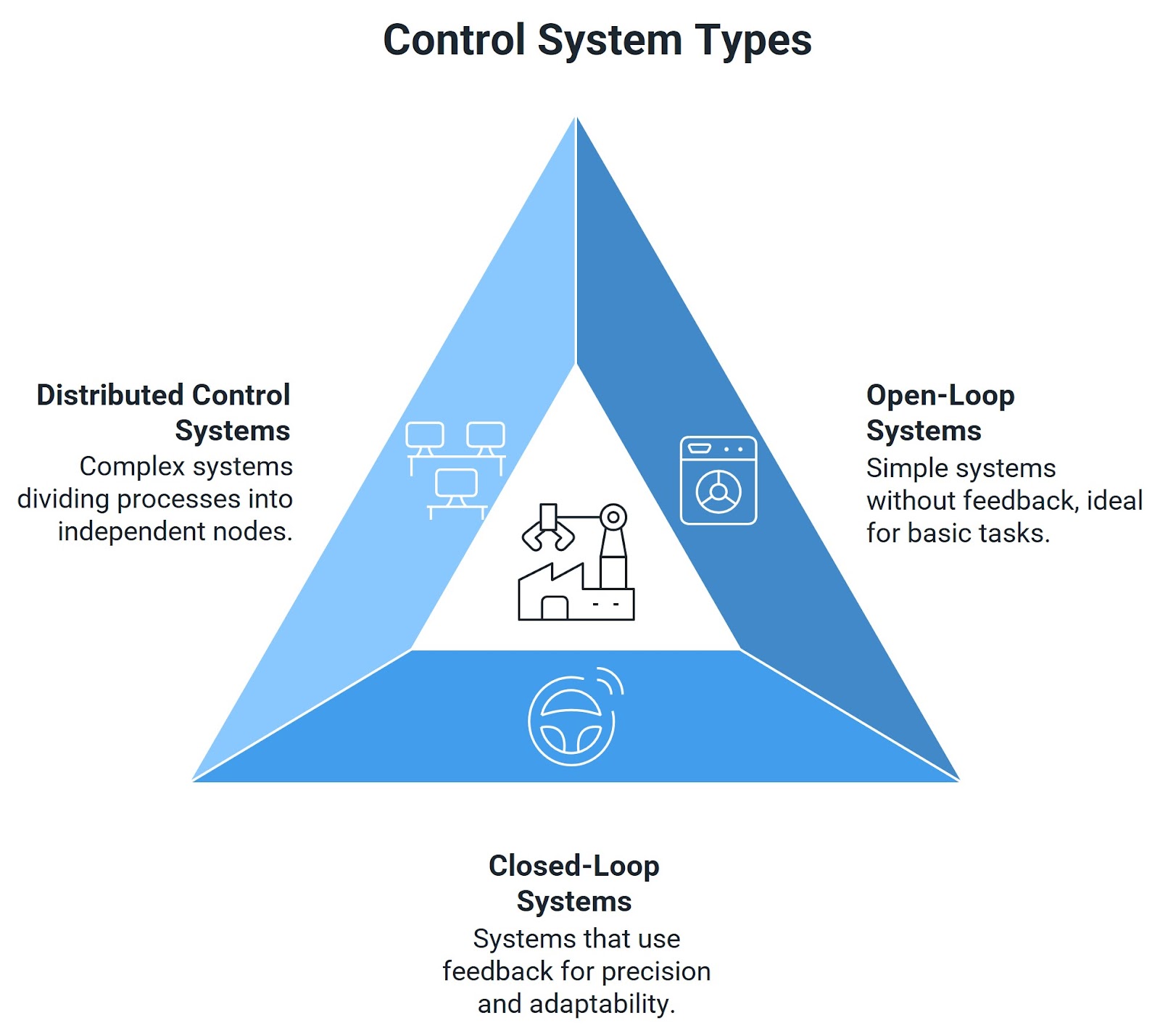%20(21).png)
For More Information
Contact us!.png)
%20(37).png)
Dipesh Patel is the President & CEO of DP Gayatri, partnering with OEMs and Contract Manufacturers to automate and scale operations. A seasoned management consultant and graduate of the UofM Carlson School of Management, he brings strategic leadership to a portfolio of manufacturing and automation companies delivering factory automation, contract assembly, facility relocation and expansion, and supply chain localization across the U.S. and Latin America.
Industrial automation is the cornerstone of modern manufacturing, driving efficiency, precision, and scalability. By automating everything from basic tasks to management of intricate operations, these systems revolutionize how facilities function.
But what exactly are industrial automation systems, and how do they work together? In this article, we’ll delve into the various types of automation systems, their key components, and the steps involved in implementing them effectively.
The integration of automation into business environments is a phased process. What are the stages of automation in business that companies typically progress through?
1. Mechanization
Mechanization is the first step and involves replacing manual labor with machinery. For instance, conveyor belts in factories eliminate the need to manually move heavy goods, saving time and reducing strain on workers.
2. Integration
At this stage, machines and processes are interconnected. For example, a production line might link robotics, sensors, and software to create a unified system capable of seamless communication.
3. Monitoring
Introducing automated monitoring systems allows businesses to analyze data in real-time. Sensors and specialized software track performance and identify inefficiencies, enabling faster decision-making.
4. Optimization
Finally, businesses proceed to optimization, where advanced AI and machine learning refine processes. Predictive maintenance, operational forecasting, and error correction ensure peak performance.
Transitioning through these stages requires careful planning and scaling of technology solutions, allowing businesses to reap the full benefits of automation.
Every industrial automation system relies on core components to function. These components comprise the foundational aspects of any automation system:
1. Sensors
Sensors gather data by detecting changes in the environment, such as temperature, pressure, or proximity. For example, temperature sensors might monitor conditions in a food processing facility.
2. Controllers
Controllers execute necessary actions based on the data sensors collect. For instance, a programmable logic controller (PLC) is utilized to manage robotic arms on an assembly line, ensuring precision and speed.
3. Actuators
Actuators carry out physical actions. These could involve moving, opening, or assembling components in response to controller commands. A common example is the use of motors to rotate parts on a conveyor belt.
4. User Interfaces
User interfaces allow operators to interact with and manage automation systems. These range from touchscreen panels to dashboards that display performance metrics.
Together, these four elements of automation with examples form the building blocks of any automated manufacturing environment.
Automation can be classified into three main types, each suited for specific applications. In describing what are the types of automation and their functions, it’s important to understand that in this context, they may include functional overlaps. Here’s a breakdown:
1. Fixed Automation
Fixed automation is designed for high production rates with limited flexibility. Assembly lines for vehicle manufacturing are a classic example. While highly efficient, making changes to the setup may be costly.
2. Programmable Automation
Unlike fixed automation, programmable automation allows for reconfiguring systems to produce different products. This is common in batch production environments, such as chemical or steel processing.
3. Flexible Automation
Flexible automation takes programmability to the next level, enabling machines to shift between tasks while avoiding downtime. Industries where product variations are frequent (such as electronics), benefit greatly from this adaptability.
Each type has advantages and challenges, but all play vital roles in enhancing productivity across diverse industries.
An essential component of industrial automation systems is the types of systems used to control their operation:

1. Open-Loop Control Systems
Open-loop systems execute commands without receiving feedback. A basic example is a manually set washing machine. While simple and cost-effective, they lack precision as they cannot adjust to changing conditions.
2. Closed-Loop Control Systems
Closed-loop systems rely on feedback for improved accuracy. For instance, cruise control systems in cars adjust speed based on real-time data, ensuring a smooth ride regardless of terrain or load.
3. Distributed Control Systems (DCS)
DCS are highly sophisticated and used for complex automation needs. They divide processes into nodes, which are monitored and controlled independently. Industries like oil and gas or power generation often utilize DCS for efficient operations.
Understanding what are the types of industrial automation systems, including advanced control methods like DCS, highlights the range of solutions available for different industries and applications.
Industrial automation systems, including the four main types—Fixed, Programmable, Flexible, and Distributed Control Systems (DCS)—play a crucial role in streamlining operations, boosting productivity, and enhancing precision across various industries. Each system offers unique advantages tailored to specific applications, enabling businesses to optimize processes effectively. With advancements in automation technology, industries have the opportunity to innovate and stay competitive in an evolving market landscape.
Ready to transform your business with industrial automation? Explore our factory automation insights and discover how industrial automation can transform your operations. Contact DP Gayatri today to get started with expert guidance tailored to your industry.
